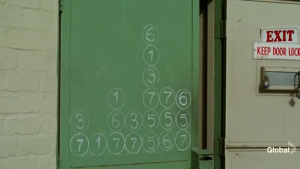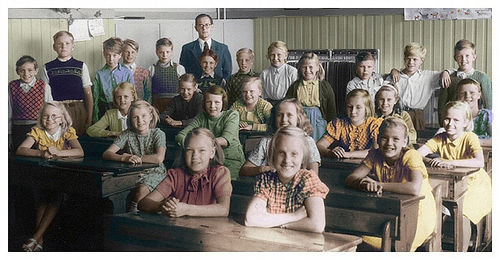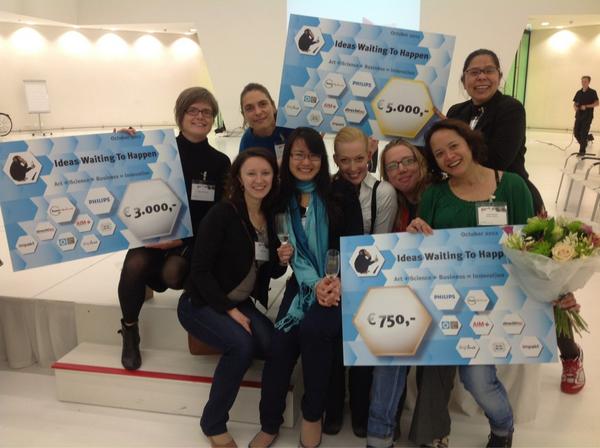Ideally speaking, you should be able to experience entertainment and education within a game-frame – experiencing ‘fun’ and any ‘intentional content’ at the same time, instead of switching between blocks of one or the other.
 This takes a creative approach of the intended content combined with a deep understanding of numerous game mechanics. On a more abstract level we (media psychologists) can predict that to facilitate blending, presence is a very important concept. Through a feeling of presence experienced during gameplay, we process the things going on in the game environment, i.e. your intended content (Biocca & Harms, 2002). Presence splits in a self- , spatial- and a social dimension. First I will discuss them as a psychological concept and then apply them to the often used gamification example: Foursquare.
This takes a creative approach of the intended content combined with a deep understanding of numerous game mechanics. On a more abstract level we (media psychologists) can predict that to facilitate blending, presence is a very important concept. Through a feeling of presence experienced during gameplay, we process the things going on in the game environment, i.e. your intended content (Biocca & Harms, 2002). Presence splits in a self- , spatial- and a social dimension. First I will discuss them as a psychological concept and then apply them to the often used gamification example: Foursquare.
Presence as a whole “can be understood as a psychological state in which the person’s subjective experience is created by some form of media technology with little awareness of the manner in which technology shapes this perception” (Tamborini, 2006, p. 226).
- Self presence – the idea of “being”- is the presentation of oneself in the virtual world.
- Spatial presence – the idea of “being in”- is mainly determined by two qualities: involvement and immersion. Involvement relies on mental vigilance and depends on the meaningfulness of an environment, while immersion depends on the environments ability to isolate people from other surrounding stimuli such as temperature or audio (Tamborini, 2006).
- Social presence – the idea of “being with” – is the sense of being in a social environment. It involves recognising other actors in the game environment as social entities. Of course, the likelihood of inducing a strong sense of social presence is greatest when the other actors are (controlled by) actual humans.
In Foursquare the presence of self is facilitated by you logging in as yourself (possibly through one of your networking sites) and giving yourself a name/face in this shared online environment. Spatial presence is a very important marker in Foursquare as it is the basic game mechanic; the digital translation of where you physically are. This takes the involvement, meaning and attention you experience in the environment you are physically in and piggybacks that into the Foursquare environment. Social presence is high because all the other actors in the environment are representations of actual humans. Humans like yourself.
Biocca, F., & Harms, C. (2002) Networked minds social presence inventory; measures of co-presence, social presence, subjective symmetry, and intersubjective symmetry.
Tamborini, R., & Skalski, P. (2006). The role of presence in the experience of electronic games. In P. Vorderer & J. Bryant (Eds.), Playing Video Games; motives, responses and consequences (pp. 225-240). Mahwah, NJ: Lawrence Erlbaum Associates, Inc.
Blog written for Gamifeye – a UK platform – published online 11.03.2013





 The six key qualities that describe an ARG are
The six key qualities that describe an ARG are
